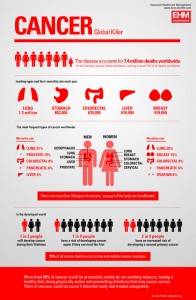Kimberly Kopko, Ph.D., Associate Director of Cornell Cooperative Extension and Associate Director of Extension and Outreach in the College of Human Ecology
John Eckenrode, Ph.D., Professor of Human Development and Associate Director of the Bronfenbrenner Center for Translational Research, conducts research and participates in extension-related activities in the area of child abuse and neglect. Dr. Eckenrode has spent part of his academic career examining the long-term effects of the Nurse-Family Partnership program (NFP) on the life-course of high-risk mothers and the development of their children. This research-based and theory driven early intervention program has been successful in reducing the incidence of child abuse and neglect in at-risk families and has evolved into a nationally-known and recognized applied program with both practice and policy applications.
Nurse-Family Partnership
Dr. David Olds, who received his Ph.D. in Human Development, initially conducted the Nurse-Family Partnership Project in 1977 in Elmira, New York. Four hundred young women, most of whom were young, unmarried, low-income and pregnant for the first time, participated in this study. The participants were assigned to different groups: a treatment group of mothers who received an average of 9 nurse home visits during pregnancy and 23 home visits from the child’s birth until the child’s second birthday, and a control group of mothers who did not receive nurse visits. During the visits, the nurses discussed 1) health-related behaviors during pregnancy and the early years of the child’s life; 2) the care parents provide to their children; and 3) personal life course development for mothers (family planning, educational achievement, and work force participation).
Fifteen-Year Follow-up Studies
Fifteen years following the original study, Eckenrode joined Dr. Olds and his colleagues to investigate the long-term effects of this intervention on the health and development of these women and children. Results from this study revealed the beneficial, long-term effects of the nurse home visitation program, including a reduction in the number of reports of child abuse and neglect, the number of subsequent pregnancies and births, use of welfare, fewer behavioral problems resulting from drug and alcohol abuse and a reduction in criminal behavior among the study participants.
A separate study headed by Eckenrode sought to answer a specific question: whether the presence of domestic violence limited the effects of nurse home visitation in reducing reports of child abuse and neglect. Findings showed that reports of child maltreatment did not decrease in those households where domestic violence was the highest during the 15-year period following the birth of the first child. This finding prompted the researchers to conclude that the presence of domestic violence may limit the effectiveness of interventions to reduce the incidence of child abuse and neglect. However, it is important to note that the impact of domestic violence did not affect the other program outcomes (e.g. subsequent birth rate, use dependence on welfare) but rather was specific to child abuse and neglect.
In addition to the positive maternal outcomes, analyses using the same 15-year follow up data revealed that nurse home visitation also reduced the prevalence of certain problematic behaviors—including arrests, alcohol use, and promiscuous sexual behavior—among the 15-year-old children born to the high risk mothers.
The positive outcomes for youth in the nurse-visited group prompted a further study in which Eckenrode and his colleagues examined the early onset of antisocial behaviors for the 15-year-old youth. Findings revealed a relationship between child maltreatment and early-onset problem behaviors for youth who did not receive home visits. However, no relationship between maltreatment and early onset problem behaviors was found for the youth in the nurse-visited group.
Eckenrode and his collaborators suggest that the nurse home visits prevented the occurrence of many types and chronic forms of maltreatment and also prevented maltreatment that extended across several important development stages (e.g., maltreatment that occurred both in childhood and early adolescence). The maltreatment that did occur in the treatment group children tended to occur earlier in the children’s lives and did not continue over long periods of time. These findings suggest that home visiting by nurses reduces the risk of child maltreatment as well as potential future conduct problems and antisocial behavior among children and youth born into at-risk families.
Many of the beneficial effects of the program found in the Elmira trial and concentrated in higher risk groups were reproduced in a trial in Memphis, Tennessee (1988). Similar results were likewise found in a Denver, Colorado trial (1994). Consistent program effects from the Elmira and Memphis trials include: improvement in women’s prenatal health, fewer childhood injuries, fewer subsequent pregnancies, increased intervals between births, increased employment for mothers, reductions in welfare and food stamps, and improved school readiness for children. Overall, The Elmira and Memphis trials demonstrate that the nurse home visitation program achieved two of its most important goals—improved prenatal and subsequent care of children and improved effects on women’s life course. Findings from NFP research has received national attention from the United States Advisory Board on Child Abuse and Neglect which recommended the availability of home visitation services to all parents of newborns as a preventive measure against child abuse and neglect.
From Science to Practice
The National Center for Children, Families, and Communities was established at the University of Colorado Health Sciences Center to help new communities develop the Nurse-Family Partnership. The National Center is organized around nurturing community and state development of the capacities necessary for the success of the program. As of 2006, the Nurse-Family Partnership served clients in approximately 150 sites across 21 states.
This program of prenatal and infancy home visiting by nurses shows considerable promise for reducing some of the most damaging and widespread problems faced by low-income children and families in our society.
For Further Information:
Family Life Development Center: http://www.human.cornell.edu/fldc/
Nurse-Family Partnership: www.nursefamilypartnership.org
Nurse-Family Partnership Newsletter: http://www.nursefamilypartnership.org/about/news/nfp-newsletter
National Data Archive on Child Abuse and Neglect: http://www.ndacan.cornell.edu/
Child Abuse Prevention Network: http://child.cornell.edu/
Child Abuse Recovery Programs: http://www.recovery.org/topics/choosing-the-best-inpatient-child-abuse-and-addiction-recovery-center/
STATISTICS: 15-YEAR FOLLOW-UP STUDIES
Long-term effects of nurse home visitation on low-income, unmarried mothers’ behavior:
79% fewer verified reports of child abuse and neglect
32% fewer subsequent births 30 fewer months of welfare use
44% fewer behavioral problems due to alcohol and drug abuse
61% fewer arrests
Long-term effects of nurse home visitation on children’s criminal and antisocial behavior:
59% fewer arrests
69% fewer convictions
58% fewer sexual partners
28% fewer cigarettes smoked per day
51% fewer days having consumed alcohol (last 6 months)
References
Eckenrode, J., Ganzel, B., Henderson, C.R., Smith, E., Olds, D., Powers, J., Cole, R., Kitzman, H., & Sidora, K. (2000). Preventing child abuse and neglect with a program of nurse home visitation: The limiting effects of domestic violence. Journal of the American Medical Association, 284, 1385-1391.
Eckenrode, J., Zielinski, D., Smith, E., Marcynyszyn, L.A., Henderson, C.R., Jr., Kitzman, H., Cole, R., Powers, J., & Olds, D.L. (2001). Child maltreatment and the early onset of problem behaviors: Can a program of nurse home visitation break the link? Development and Psychopathology, 13, 873-890.
Olds, D.L. (2002). Prenatal and infancy home visiting by nurses: From randomized trials to community replication. Prevention Science, 3, 153-172.
Olds, D.L., Eckenrode, J., Henderson, C.R., Jr., Kitzman, H., Powers, J., Cole, R., Sidora, K., Morris, P., Pettitt. L.M., & Luckey, D. (1997). Long-term effects of home visitation on maternal life course and child abuse and neglect: 15-year follow-up of a randomized trial. Journal of the American Medical Association, 278, 637- 643.




